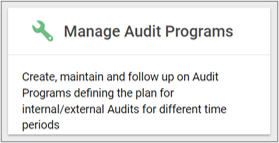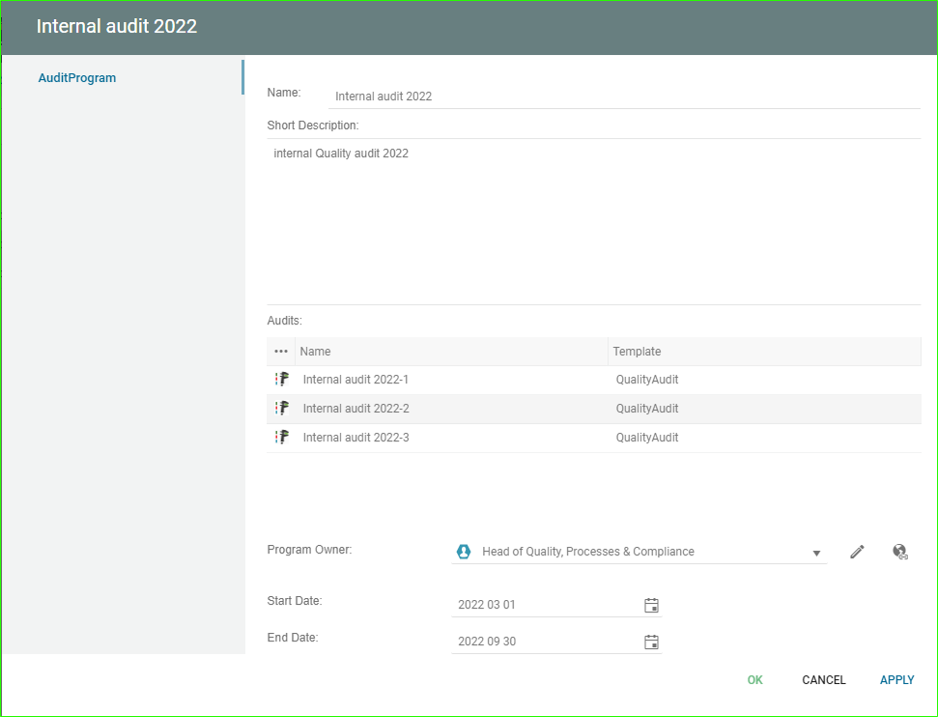Description of this template will be available soon.
Template Type: Non-Graphical
Contract
The contract template is used to describe and capture relevant meta data about relevant contracts.
The main tab contains data about the contractual period, and the external part.
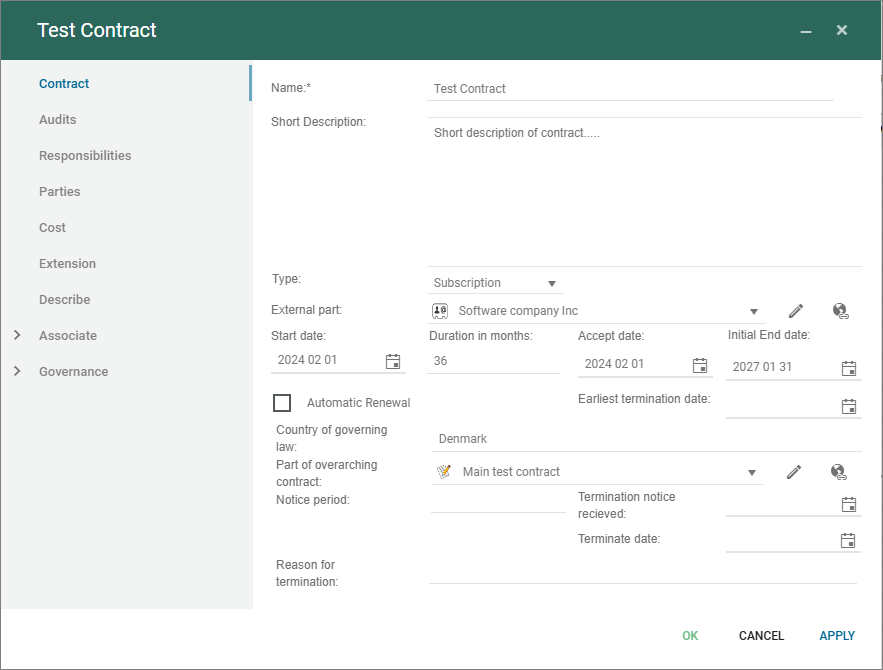
In addition a set of sub-tabs are available.
Responsibilities
Detail the relevant organisations entities (positions, persons, organizationunits, ..) that are related to the contract from a RASCI point of view.
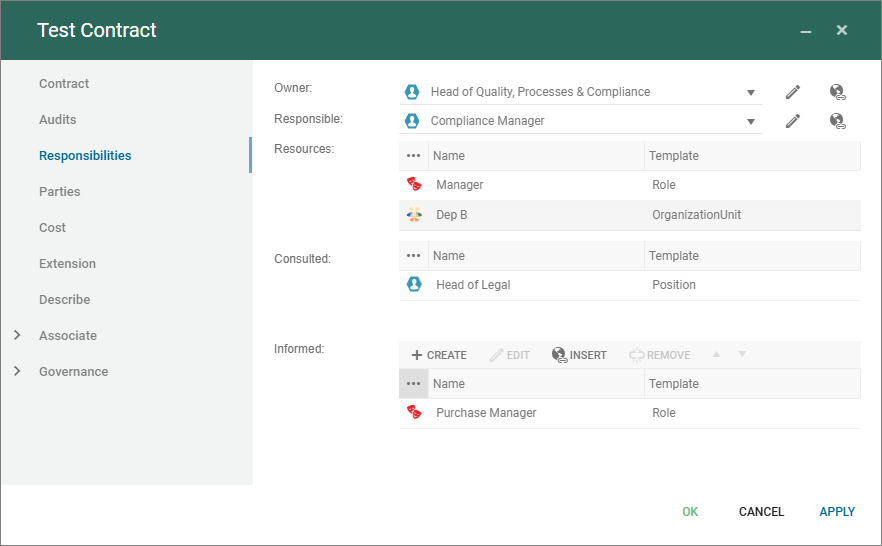
Parties
Parties contain standard fields to link to external and internal parties associated to the contract.
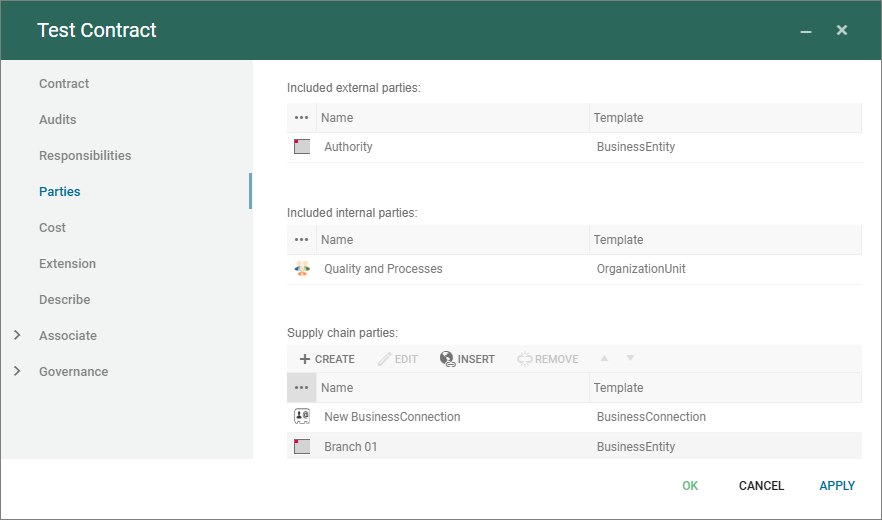
Cost
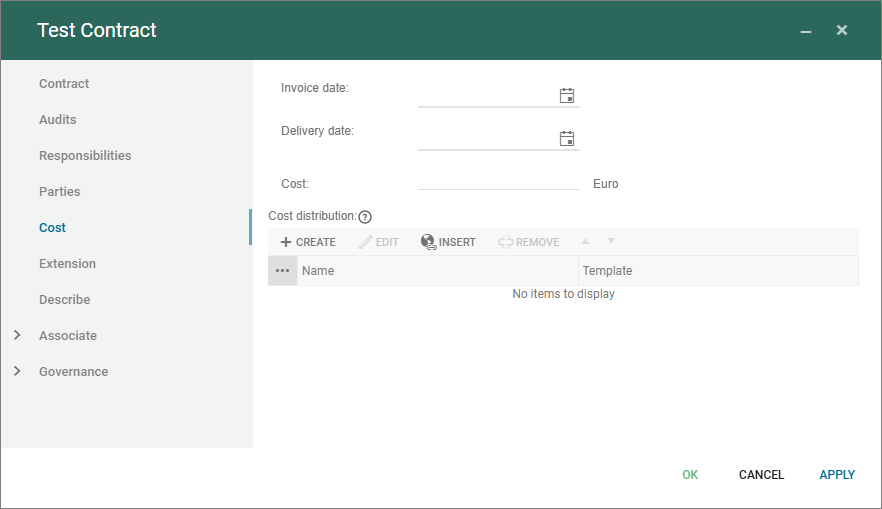
Extension
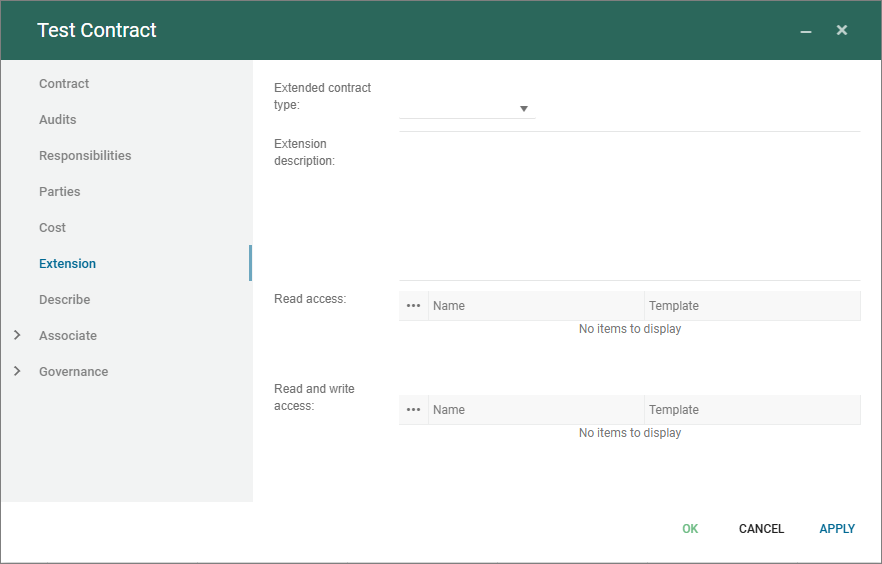
As any other objects contracts can be associated to a GovernanceWorkflow, there is a standard workflow available for Contracts that can be imported and enabled.
In QualiWare 10.10 there is a standard desktop dedicated to Contract Management.
Complaint
This template can be used to describe complaints, e.g. from customers or other external parties.
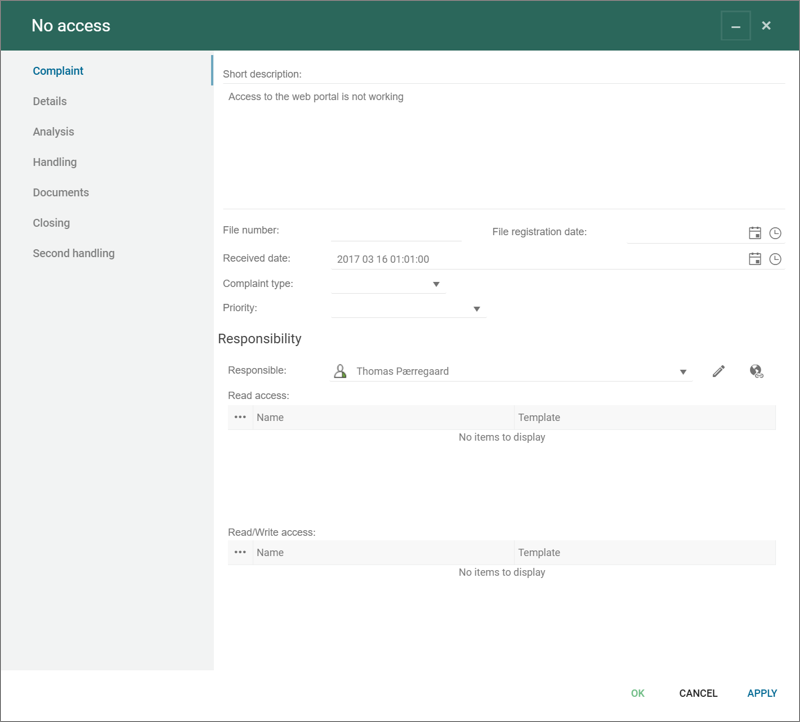
There is a standard Governance Workflow for Complaint management.
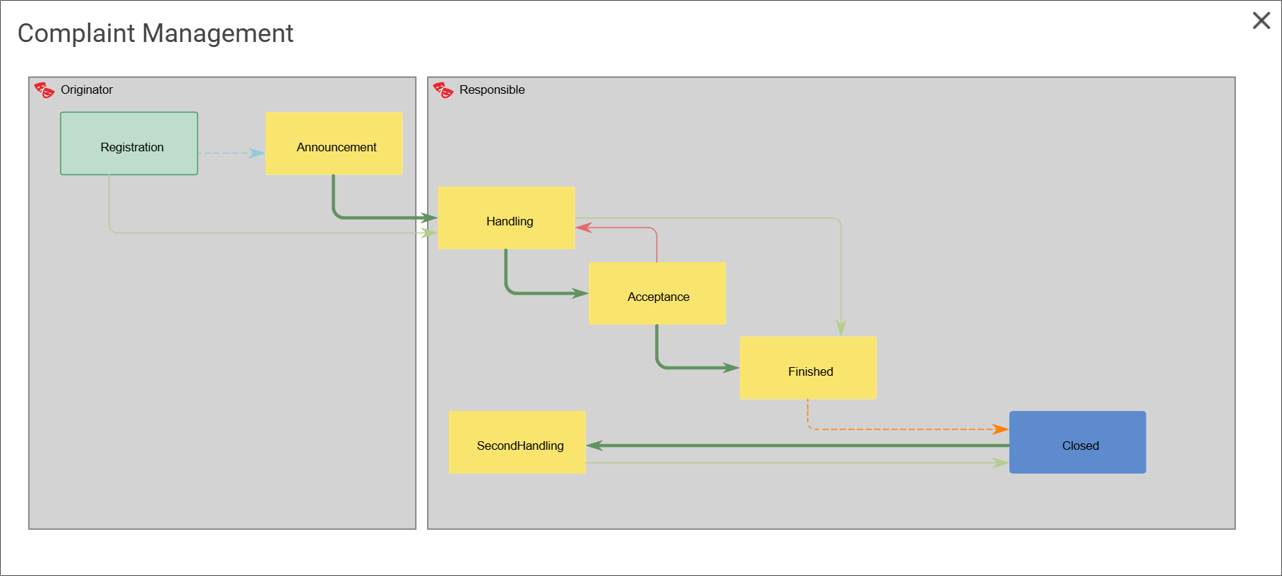
Competence Level
CompentenceLevel are used to capture different levels of a competence and the level is given to a person, and can be approved by a competence approver.
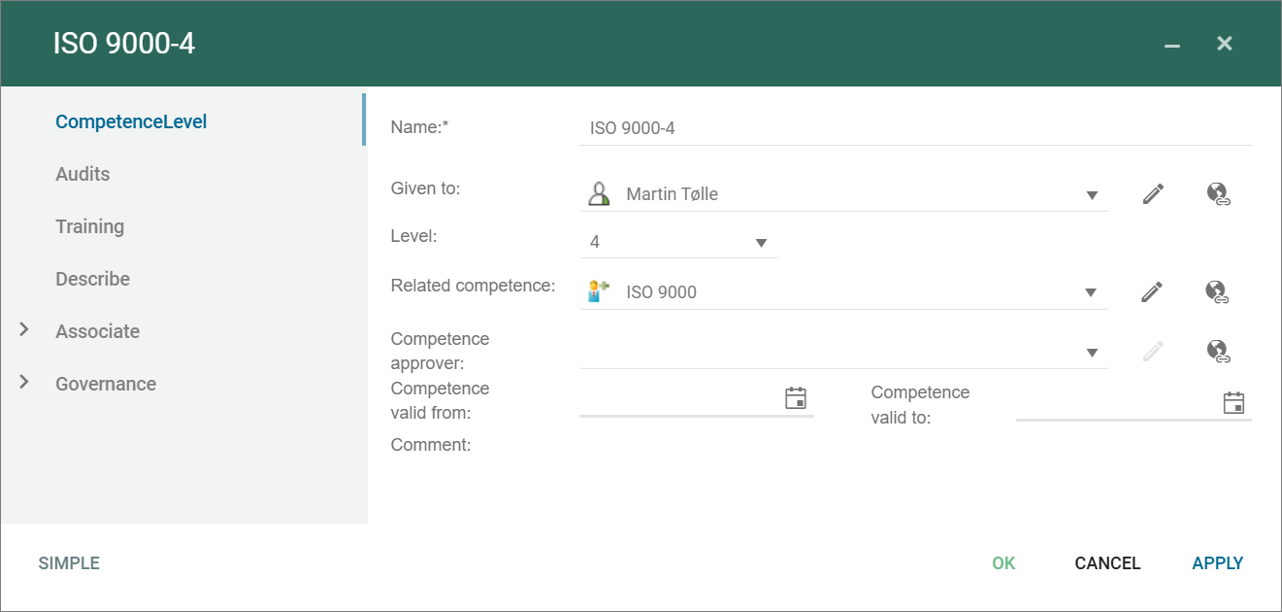
A competence level can be managed in a governance workflow. There is a standard competence level management governance workflow a part of the person management flow.
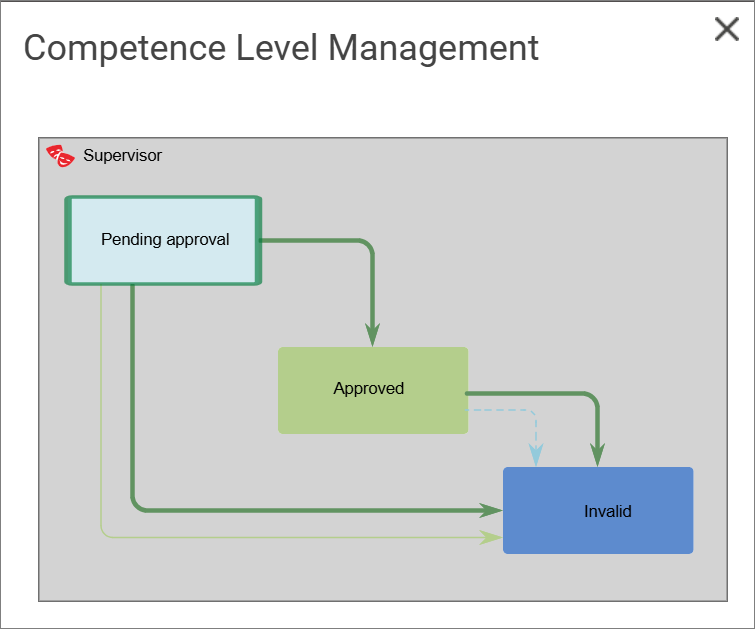
Comment
This template is used to capture and describe comments to other objects.
It is part of the standard GovernanceWorkflow for change mangement, where it is possible to add comments to content as part of the review governance flow.
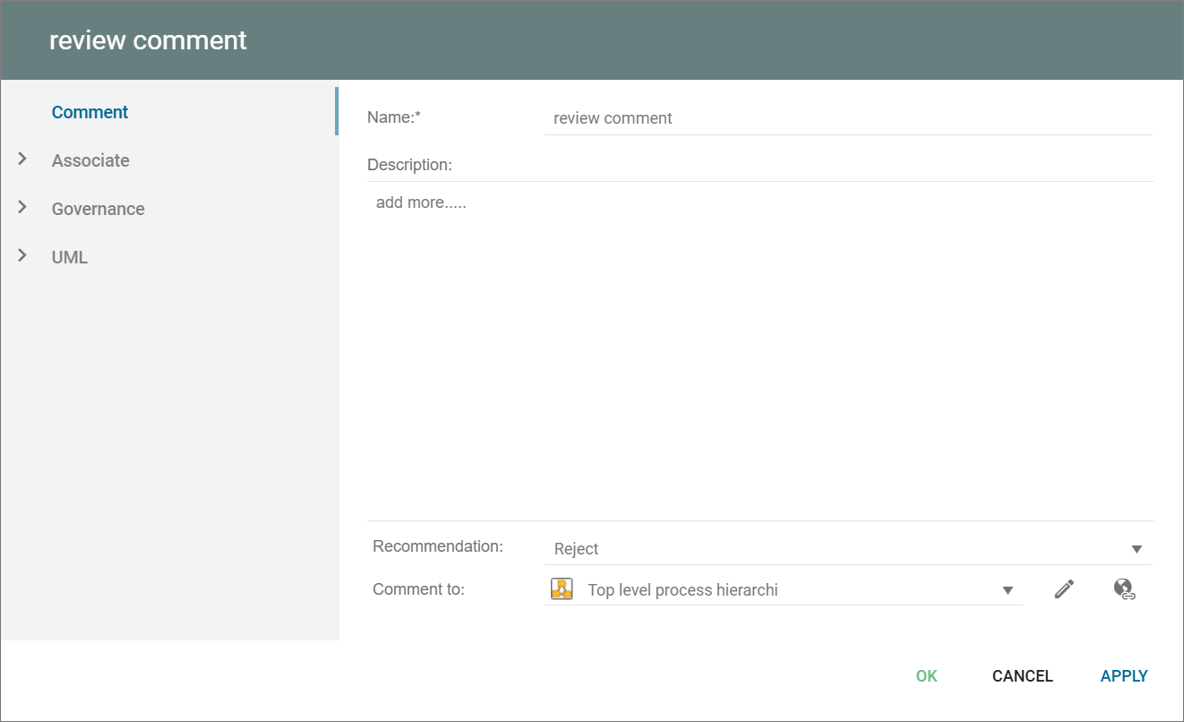
Check Result
Description of this template will be available soon.
Check List
Description of this template will be available soon.
Check Item
Description of this template will be available soon.
Business Case
A business case object describes a business case, and it can be decribed with a set of properties.
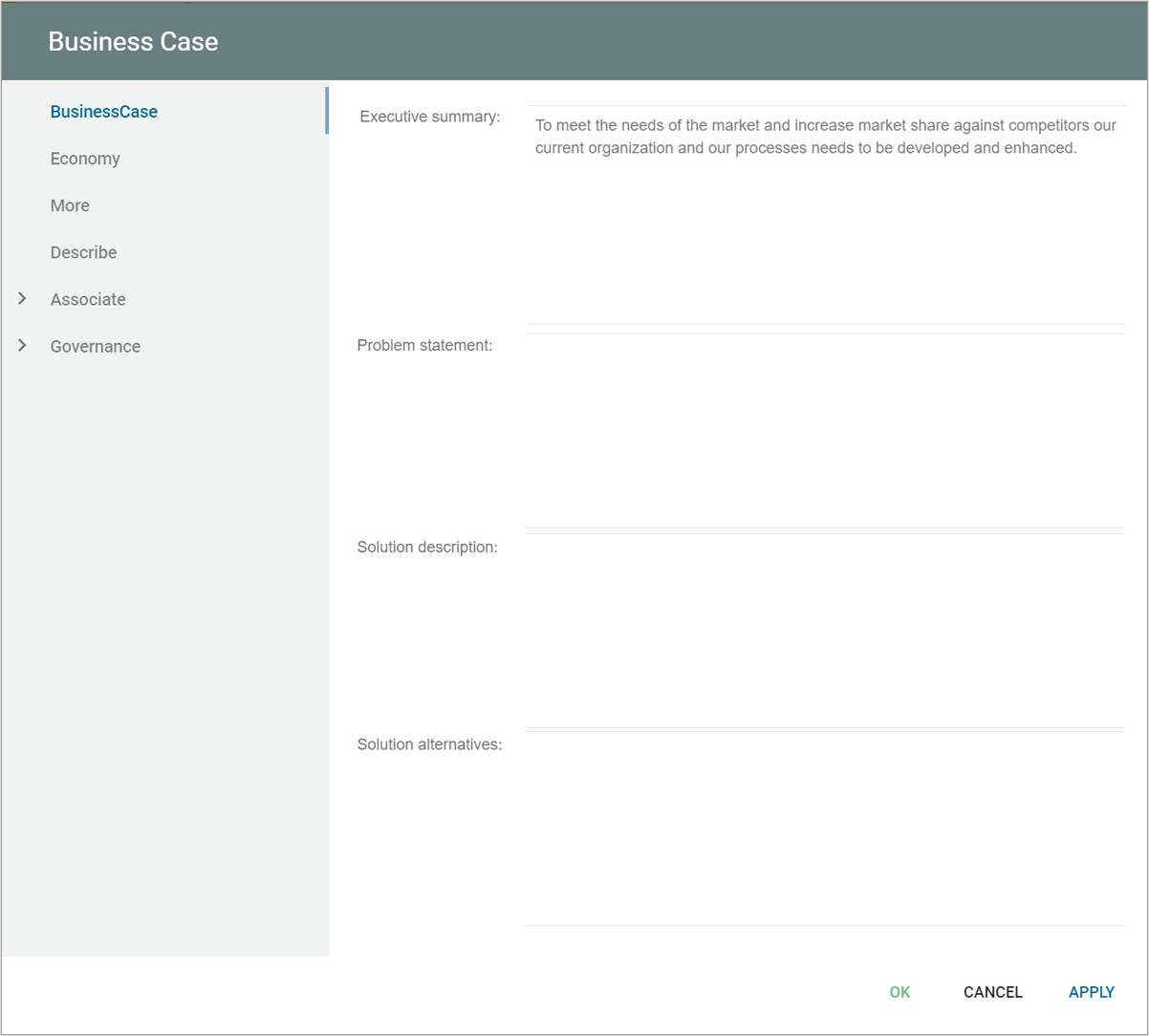
Including economic attributes
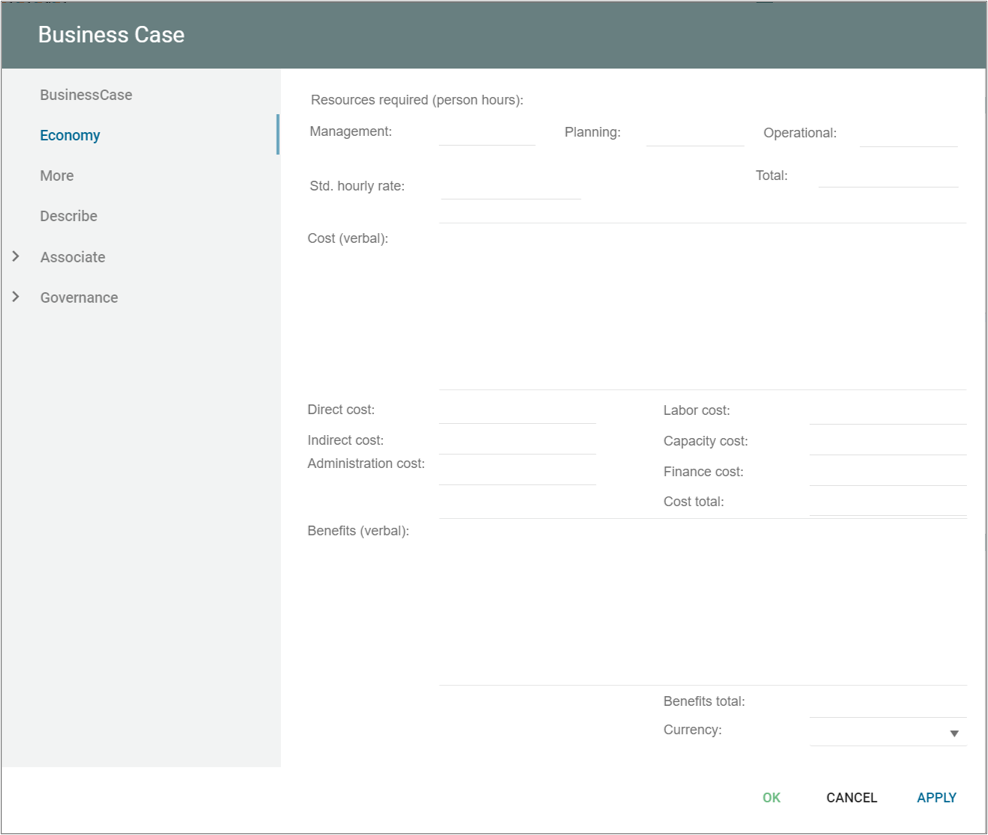
and more
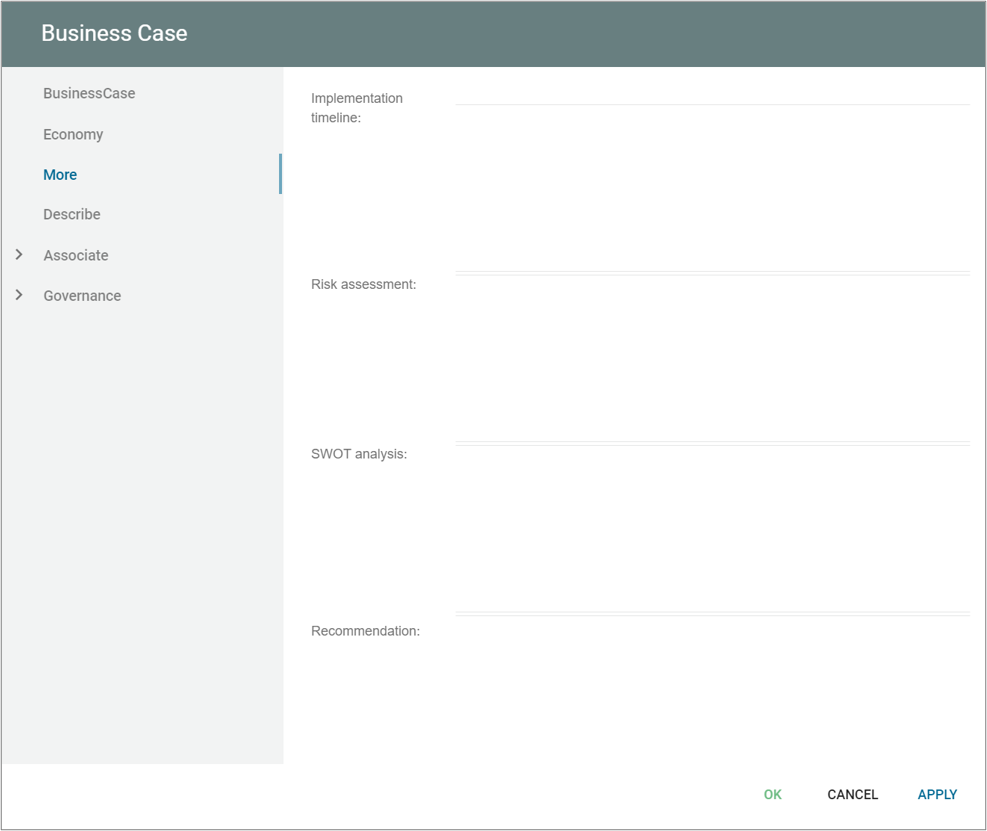
Audit Program
The Purpose of the the AuditProgram template is to collect a set of audits in a plan/program.
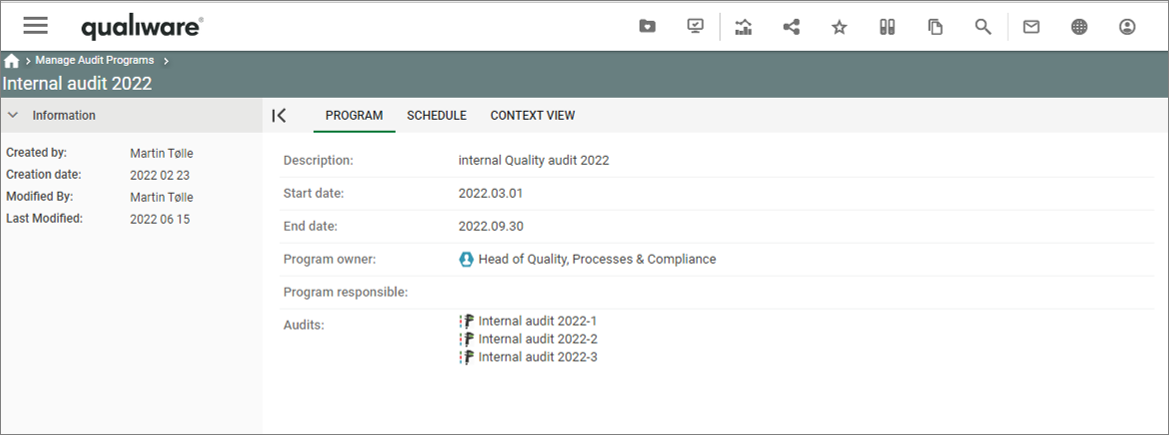
You can create an AuditProgram from the Compliance Desktop on the Web, or via the Repository Explorer.

An auditprogram have a dedicated focus, e.g. “ISO9001 audits Q3-2022” and collects a set of audits each having their own details and governance flow, cf. the QualityAudit-template.
Read more about how to manage audit programs here 